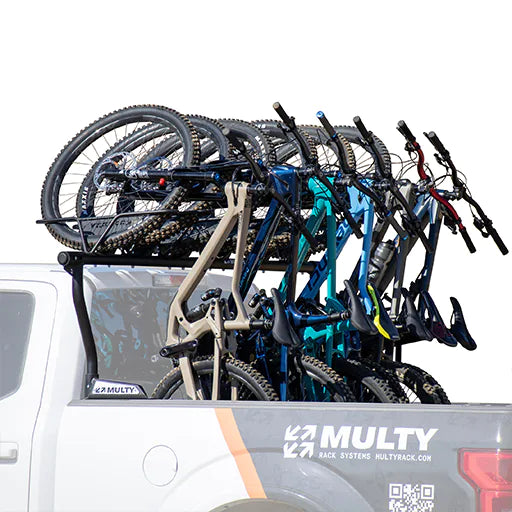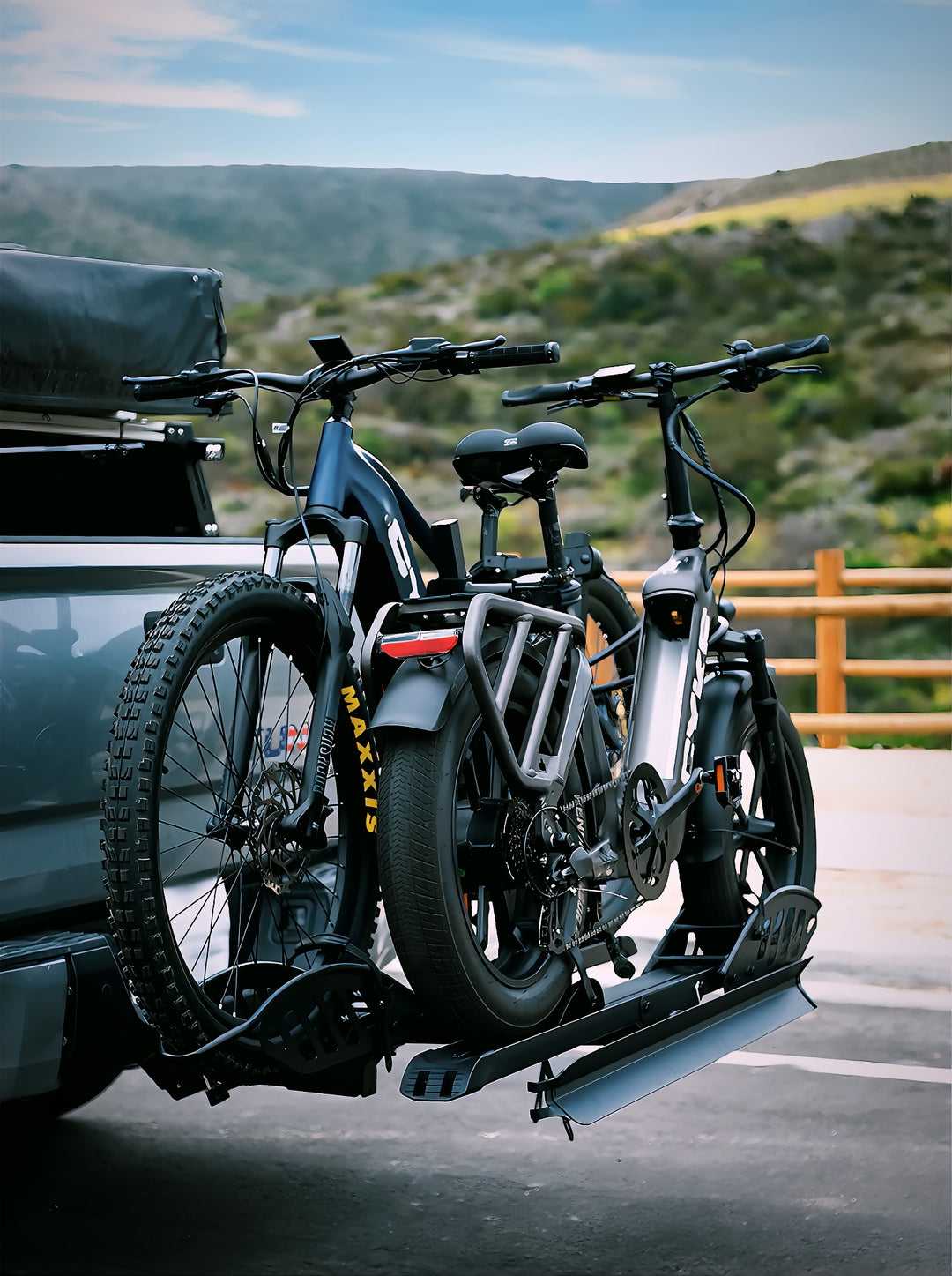Why a Durable Bike Rack Is Critical for City Cyclists
Wiki Article
Discover the Various Kinds of Bike Shelf and Their Practical Applications for Cycling Fanatics
The selection of bike Racks offered today provides to the diverse requirements of biking fanatics. From freestanding to wall-mounted choices, each layout supplies special benefits for storage space and transport. Mobile Racks likewise offer flexibility for those on the relocation. However, selecting the suitable kind calls for cautious consideration of particular needs. Recognizing these aspects can make a significant difference in both benefit and safety and security for cyclists. What are the vital considerations when picking a bike shelf?Comprehending Bike Rack Types
Different sorts of bike Racks deal with the diverse needs of bicyclists. Among the most typical are freestanding racks, commonly discovered in metropolitan areas, which permit several bikes to be safeguarded in a small room. Wall-mounted Racks serve those with restricted floor room, providing an efficient option for home storage space. Furthermore, portable bike shelfs, made for ease of transport, attract bicyclists that often take a trip.
Hitch-Mounted Bike Racks
Hitch-mounted bike Racks use a useful service for moving bicycles, however understanding their installation procedure is necessary for efficient use. Customers have to additionally take into consideration the weight capacity of these Racks to guarantee safety and security and stability while taking a trip. Furthermore, compatibility with different car kinds plays a significant duty in figuring out the appropriate rack for individual requirements.Installation Refine Introduction
When picking a hitch-mounted bike rack, comprehending the installation process is important for guaranteeing safety and security and comfort. First, the customer has to validate compatibility in between the lorry and the shelf's drawback receiver. The majority of Racks are created for either 1.25-inch or 2-inch receivers. After picking the suitable shelf, the installation starts with protecting the rack right into the drawback receiver and tightening the drawback pin or screw to avoid movement. Proper alignment is essential to determine the rack does not block tail lights or permit plates. When mounted, it is suggested to check for security by applying slight pressure to the rack. Adhering to the manufacturer's instructions will certainly assure a successful installation, advertising a risk-free cycling experience when traveling.Weight Capability Considerations

Compatibility With Car Kind
Choosing the appropriate bike rack includes verifying compatibility with various vehicle kinds. Hitch-mounted bike Racks are made to attach to the back drawback receiver of a car, making them suitable for a vast array of vehicles, suvs, and vehicles. It is crucial to check the drawback class and weight capability to validate a correct fit. A lot of hitch-mounted Racks work with 1.25-inch and 2-inch receivers, fitting vehicles furnished with appropriate towing capacities. In addition, individuals need to consider their automobile's height and layout, as some Racks may block back accessibility or call for extra clearance. Eventually, understanding automobile requirements confirms that cycling enthusiasts can safely deliver their bikes without endangering safety or functionality.Trunk-Mounted Bike Racks
Trunk-mounted bike Racks offer a practical service for bicyclists seeking a reliable method to deliver their bikes. Comprehending the installation process is crucial for ideal usage, as improper configuration can cause security concerns. Furthermore, considering the weight ability of these Racks assurances that they can firmly hold the bikes without threat of damages or failing during transit.Setup Process Summary
Numerous biking fanatics appreciate the convenience of trunk-mounted bike Racks for their simplicity of use and versatility. The setup process commonly starts with unloading the shelf and familiarizing oneself with its components. The majority of Racks come with adjustable bands and hooks developed to safeguard them to the lorry's trunk or hatch. Customers E Bike Rack must verify the rack is located properly, straightening it with the vehicle's shapes for security. Complying with the manufacturer's guidelines, the bands are after that tightened firmly, guaranteeing a snug fit. It is essential to check that the rack does not block the lorry's lights or permit plate. Lastly, verifying that all connections are protected before filling bikes is essential for risk-free transportation. Appropriate installation boosts both safety and security and effectiveness throughout biking trips.Weight Ability Considerations
When considering a bike rack for moving bikes, weight capacity is an essential factor that can not be forgotten. Trunk-mounted bike Racks normally carry weight limits that differ depending upon the model and layout. It is crucial for individuals to check these requirements to guarantee they do not go beyond the suggested weight, as doing so can jeopardize both safety and vehicle integrity. Most trunk-mounted Racks can sustain 1 or 2 bikes, with a consolidated weight ability ranging from 70 to 120 extra pounds. Bicyclists need to also take into consideration the weight of their bikes, particularly if they own heavier designs like electrical bikes. Appropriately matching the rack's weight capability with the bikes' weights guarantees a secure and safe transportation experience.Roof-Mounted Bike Racks
Roof-mounted bike Racks provide a streamlined option for moving bikes, providing bicyclists with the advantage of maximizing cargo space. These Racks are developed to hold bikes safely atop the automobile, permitting simple access to the rear of the auto and stopping obstructions to the permit plate or tail lights. They are suitable for individuals who often take a trip with their bikes, as they can accommodate numerous bike designs and sizes.Installation normally includes connecting the shelf to the lorry's bars, guaranteeing a steady and risk-free fit. Roof-mounted Racks are lightweight and usually wind resistant, which can cause enhanced gas effectiveness compared to other kinds of shelfs. Customers need to think about the elevation of their vehicle when loading and discharging bikes, as well as prospective challenges when entering garages or low-clearance areas - E Bike Rack. Generally, roof-mounted bike Racks supply a versatile and efficient option for devoted cyclists on the move
Wall-Mounted Bike Racks
Wall-mounted bike Racks supply an effective remedy for bicyclists looking for to optimize minimal space while firmly storing their bikes. These Racks are suitable for metropolitan residents or those with small garages, as they raise bikes off the ground and make use of vertical room. Made from sturdy products, wall-mounted alternatives can fit numerous bike kinds, including roadway, hybrid, and hill bicycles.Setup is simple, enabling users to place them in garages, basements, or even outdoor rooms. Several styles enable for one or multiple bikes, making them flexible for specific or household use. Furthermore, some wall-mounted Racks come with integrated locks or protection attributes to discourage burglary, boosting satisfaction for bicyclists.
Portable Bike Racks
Mobile bike Racks provide cyclists a hassle-free and versatile solution for transferring their bikes. These Racks are created for simple installation and elimination, making them ideal for those that require to frequently switch over in between areas or vehicles. Small and generally lightweight, portable bike Racks can be quickly stored in a trunk or garage, minimizing the concern of permanent installations.There are various kinds of mobile bike shelfs, consisting of hitch-mounted, trunk-mounted, and roof-mounted alternatives, each dealing with different automobile types and bicyclist preferences. Hitch-mounted Racks supply security and ease of access, while trunk-mounted Racks are usually more flexible and economical. Roof-mounted Racks are great for making the most of freight room however might require some lifting.
Selecting the Right Bike Shelf for Your Demands
Just how can one determine the most effective bike shelf to suit their particular cycling needs? Recognizing the best bike rack includes examining several variables. One have to consider the kind of vehicle used for transportation, as Racks are developed for various mounting systems, such as trunk, roofing, or drawback. Next off, the variety of bikes to be lugged is vital; some Racks suit just one, while others can hold several bikes successfully. In addition, figuring out the weight and structure style of the bikes is significant, as specific Racks are much better fit for heavier or distinctly designed bicycles. Ultimately, desired usage must be thought about; frequent vacationers might prefer a more portable choice, while periodic customers might focus on simpleness and convenience of installation. By carefully weighing these factors to consider, individuals can pick a bike shelf that fulfills their requirements and improves their cycling experience.
Often Asked Concerns
Can Bike Racks Accommodate Different Bike Sizes and Styles?
Bike Racks vary in layout, enabling lodging for various bike sizes and styles. Some Racks feature flexible parts, while others are especially customized for sure bikes, making sure secure storage and very easy accessibility despite the bike's specifications.Just how Do I Properly Protect My Bike on a Rack?
To correctly protect a bike on a rack, one must ensure the framework and wheels are securely secured utilizing locks or straps, inspecting for security and preventing movement throughout transportation to stay clear of damages.Are Bike Racks Easy to Mount and Eliminate?
Bike Racks vary in installment intricacy, yet many are designed for user-friendliness. Detachable versions commonly provide uncomplicated configuration and elimination, while permanent setups might require tools and more time, relying on the specific style.
What Materials Are Bike Racks Generally Made From?
Bike Racks are usually made from products such as light weight aluminum, plastic, and steel. Hitch Bike Rack. Steel offers sturdiness and toughness, while aluminum provides light-weight portability. Plastic options are typically made for ease of use and priceDo Bike Racks Affect Gas Performance When Driving?
When driving is significant, the inquiry of whether bike Racks influence gas performance. Research studies show that bike Racks can boost wind resistant drag, possibly leading to reduced fuel effectiveness, especially at greater speeds or with additional weight.After choosing the suitable shelf, the setup starts with securing the shelf right into the drawback receiver and tightening up the drawback pin or screw to protect against activity. Roof-mounted Racks are light-weight and usually wind resistant, which can lead to improved gas efficiency compared to other kinds of racks. Hitch-mounted Racks provide security and availability, while trunk-mounted Racks are usually extra economical and flexible. Next, the number of bikes to be carried is important; some Racks accommodate only one, while others can hold several bikes effectively. Bike Racks differ in design, allowing accommodation for different bike sizes and styles.
Report this wiki page